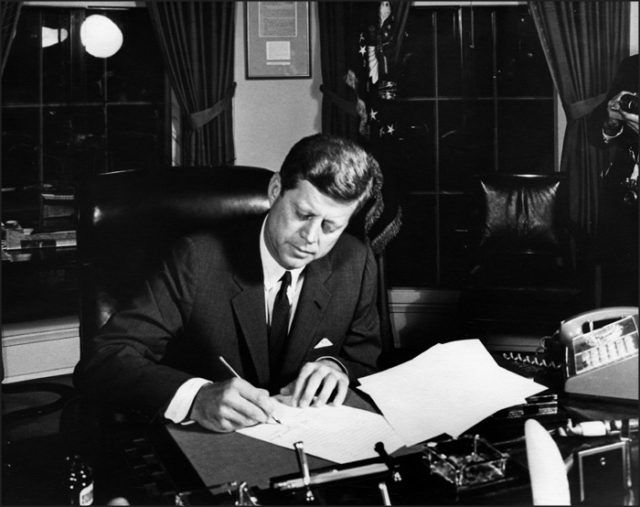A short drive from downtown Burlington, the Homestead offers hands-on history, spectacular scenery, and riverside picnic areas and walks. The Homestead provides a genuine slice of 18th century life, and an intimate look at Vermont's most colorful - and controversial - founder.
March 2011
Today's Center encompasses five museums, a research library, a professionally developed Web site, and a vibrant, growing educational outreach program.
The present-day Buffalo Bill Museum contains a wealth of material relating to the life of William F. "Buffalo Bill" Cody and the pioneer culture of the Western frontier. The exhibition in the museum serves two purposes: to examine the personal and public lives of Buffalo Bill, and to interpret his story in the context of the history and myth of the American West.
The Whitney Gallery of Western Art, established in 1958, now contains expanded collections of masterworks of the American West. Original paintings, sculpture and prints trace artistic interpretations of the West from the early 19th century through present.
The Plains Indian Museum, originally established in 1969, was rededicated in its own wing in 1979. It has one of the country's largest and finest collections of Plains Indian art and artifacts.

There is little that is more important for an American citizen to know than the history and traditions of his country. Without such knowledge, he stands uncertain and defenseless before the world, knowing neither where he has come from nor where he is going. With such knowledge, he is no longer alone, but draws a strength far greater than our own from the cumulative experience of the past and a cumulative vision of the future.
Lovers of Honor
Your Editor’s Letter on honor in the Fall 2009 issue sparked many thoughts. Honor is alive and well in many Americans today, particularly in the men and women serving in the U.S. armed forces. Yet it seems that our society encourages an attitude of entitlement. Even the Declaration of Independence says we have a right to the pursuit of happiness. We need to teach our children that honor is not a quaint or obsolete concept.
American Heritage is a vital tool in this respect. Our history offers so many shining examples of how men and women of integrity rose to the demands of their times. I grew up on the magazine, and 40 years later I still remember many times as a teenager comparing the lives and actions of our forefathers to the figures I saw around me and in the news. Times and particulars change, but the basic challenges involved in holding true to our values are eternal.
—Capt. James R. Finley,
USMC, retired
Albuquerque, NM
Crediting All Who Served
Dumbarton House is a fine example of Federal period architecture. Closely connected to the first years of the American Republic, the house has stood on the heights of Georgetown for over two centuries.
Located in downtown Frankfort, the campus includes the Kentucky Military Museum, housed within the 1850 Old State Arsenal, which contains artifacts from two centuries of war.
Five blocks northwest lies the two-story Greek-Revival Old State Capitol building that features hour-long tours through the recreated 1850s House and Senate chambers and law library. Also on the campus is the 167,000-square-foot Thomas D. Clark Center for Kentucky History, which explores Kentucky's past from Paleoindian times to the present.
This four-acre complex, situated on the banks of the Kentucky River in downtown Frankfort, contains two restored Federal-style political estates: the 1796 Liberty Hall, built by Sen. John Brown; and the 1835 Orlando Brown House, which belonged to his son.
A 75-minute tour explores both homes, and showcases such artifacts as a 19th-century Stoddard piano. Visitors can learn about Margaret Wise Brown, Sen. Brown's great-great-granddaughter and a renowned author of children's fiction. Trails lead through the boxwood and perennial gardens to the riverfront.
This 12,000-square-foot museum, located in a hangar on Lexington's Blue Grass Airport, has displays on six military and 14 civilian aircraft from every era of America's aviation history.
Highlights include a Navy F-14 Tomcat, Marine Corps F-4 Phantom fighter, and an Air Force T-83 supersonic trainer. Visitors can also view the engine collection, which features a General Electric CF6 turbofan, and ride in an original Army helicopter flight simulator.
This 1799 Italianate mansion south of the Kentucky River was home to Cassius Marcellus Clay, an abolitionist newspaper publisher, and his daughter, Laura Clay, a women's suffragist.
Costumed interpreters lead 60-minute guided tours through the 44-room house, which contains Victorian-era furnishings and 12 bedrooms.
In late August 1862, Confederates under Maj. Gen. E. Kirby Smith defeated a Union army commanded by Maj. Gen. Bull Nelson on the site of this 62-acre park.
The grounds contain the 1825 Pleasant View house, which became a Confederate hospital after the battle, slave quarters, and walking trails. One mile north is the visitors center in the 1811 Rogers House, with displays that include a laser-operated aerial map of the battle and a collection of 19th-century guns.
